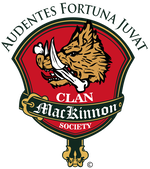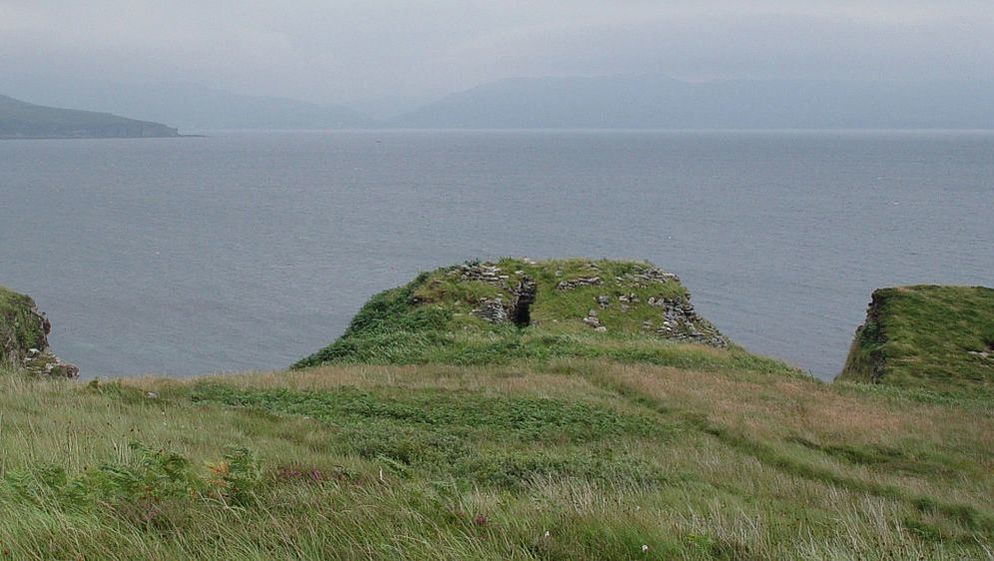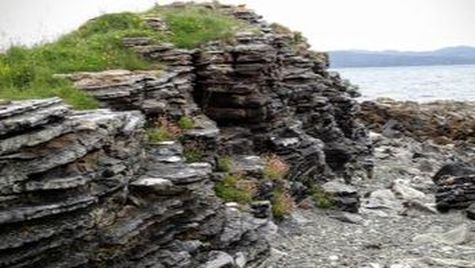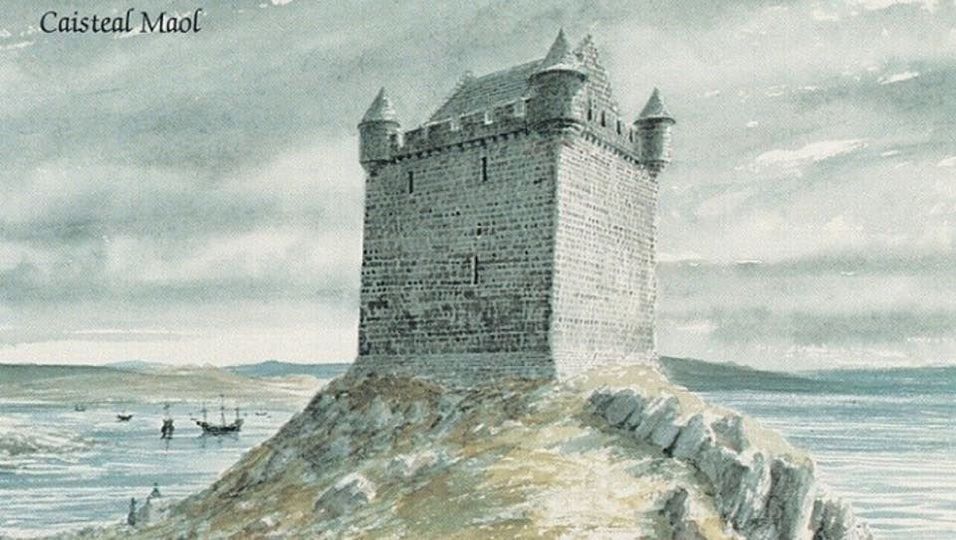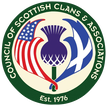MacKinnon Atlas
Dun Ringill (Castle Findanus)
There is reason to believe that MacKinnon chiefs first occupied land on Skye during the mid-14th century; they would have required an easily-defensible place to live. The tradition that Dun Ringill was the first MacKinnon home on Skye is borne out by the archaeological evidence. After several hundred years of abandonment, the 2000-year-old broch was renovated during the medieval period. The defenses were updated by the addition of a parapet and a remodeling of the entrance to make it easier to defend. The domestic comforts of the old structure were also improved by the addition to the interior of two hip-roofed buildings. Outside the fort the MacKinnons established a small village, complete with stone-built outbuildings and run-rig fields.
By 1360 Dun Ringill had become the main residence of the MacKinnon chiefs, and was known officially as Castle Findanus. The stronghold was home to the Clan's chiefs until as late as 1549. Sometime before 1577 Castle Findanus disappears from the official record, suggesting that after some 200 years the chiefs and their retainers had moved, taking up residence at Kilmorie.
By 1360 Dun Ringill had become the main residence of the MacKinnon chiefs, and was known officially as Castle Findanus. The stronghold was home to the Clan's chiefs until as late as 1549. Sometime before 1577 Castle Findanus disappears from the official record, suggesting that after some 200 years the chiefs and their retainers had moved, taking up residence at Kilmorie.
Enjoy the video below about hiking to Dun Ringill. Thank you for sharing with us, Shannon!
Dunakin/Caisteal Maol
There is a well-known tradition that Dunakin, also called Caisteal Maol, was owned by a Norse princess known as Saucy Mary. She is said to have regulated sea traffic through the Kyle of Lochalsh by the use of a huge iron chain that was stretched across the narrows. By means of this chain Saucy Mary was able to levy a toll on all passing ships, except those from her own country. When she died, Saucy Mary is said to have been buried west of Broadford under a cairn on Beinn na Caillaich ("the beinn of the old woman") with her face pointed toward her native land.
The often-repeated story that Fingon, the founder of Clan MacKinnon, acquired the watchtower through marriage to Saucy Mary is, unfortunately, not true. The tower was built by a Lord of the Isles during the 15th century and was not acquired by the MacKinnons until the 16th century. There is no historical record indicating that Dunakin was ever a permanent home of the MacKinnon chiefs. Tradition tells us, however, that Jane, the sister of Chief Sir Lachlan MacKinnon, and her nephew, Neil, sought shelter there during the 17th century. It was Sir Lachlan MacKinnon, the signatory to the statutes of Icolmcill in 1609, who had his primary residence at Kilmorie near the ancestral home of Dun Ringill/Castle Findanus.
We may never know if the fire that reputedly destroyed Dunakin was an accident or an act of war. It may be coincidence that after Cromwell's cavalry visited the Kyle in 1652, Dunakin was commonly known as Caisteal Maol ("the bald/roofless castle"). What little is left of the old tower is, however, still an imposing ruin.
The often-repeated story that Fingon, the founder of Clan MacKinnon, acquired the watchtower through marriage to Saucy Mary is, unfortunately, not true. The tower was built by a Lord of the Isles during the 15th century and was not acquired by the MacKinnons until the 16th century. There is no historical record indicating that Dunakin was ever a permanent home of the MacKinnon chiefs. Tradition tells us, however, that Jane, the sister of Chief Sir Lachlan MacKinnon, and her nephew, Neil, sought shelter there during the 17th century. It was Sir Lachlan MacKinnon, the signatory to the statutes of Icolmcill in 1609, who had his primary residence at Kilmorie near the ancestral home of Dun Ringill/Castle Findanus.
We may never know if the fire that reputedly destroyed Dunakin was an accident or an act of war. It may be coincidence that after Cromwell's cavalry visited the Kyle in 1652, Dunakin was commonly known as Caisteal Maol ("the bald/roofless castle"). What little is left of the old tower is, however, still an imposing ruin.
